With COVID-19 now an established part of everyday life, optometry like every other profession was forced to adjust and find its way in the “new normal”—or be left behind. Luckily, only 25% of ODs who responded to our annual income survey felt COVID had more of a financial impact this year than last—due to factors like temporary practice closures, decreased patient volume and corresponding exam fee revenues, reduced product sales, increased expenses for PPE, disinfection and added cost of staff training and rehiring—with just 32% noting that their income decreased as a result.
Well over a year and a half after the onset of COVID-19, optometry seems to have found its footing and made it to more solid ground, according to this year’s annual income survey. A record 1,600 optometrists responded this year. The topline finding: average income increased by 13% in 2021 over 2020, to $180,253. This is the highest annual income the survey has recorded and puts optometry back on track with pre-COVID numbers.
Following suit, the 87% of respondents who identified as full-time noted a 9% increase in their average income to $185,453 in 2021. Part-timers experienced a 63% rise, to $145,005, likely by picking up more hours. Both groups fared especially well, considering their take-homes dipped last year by as much as 30% for those putting in part-time hours.
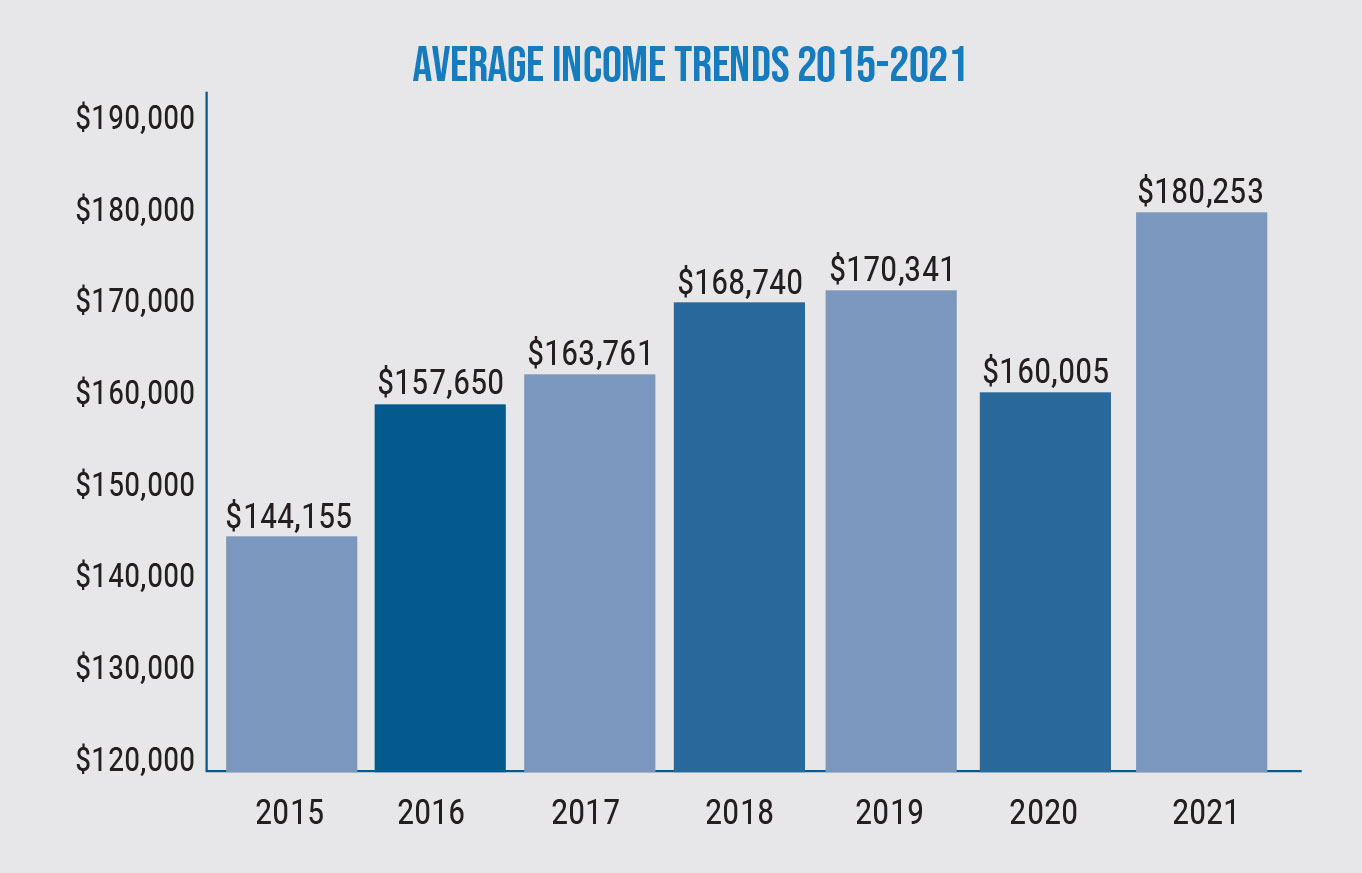 |
| Click to enlarge. |
Editor’s note: As always, be mindful that while we ask the same survey questions, the responses we compare from year to year come from different individuals, making trend analysis tricky, especially among a smaller cohort. The results offer a representative look at the profession but aren’t considered statistically rigorous, particularly year-over-year comparisons.
In addition, while we recorded 1,600 responses this year, we omitted a small number of outliers that produced misleading data to improve the overall accuracy of the findings.
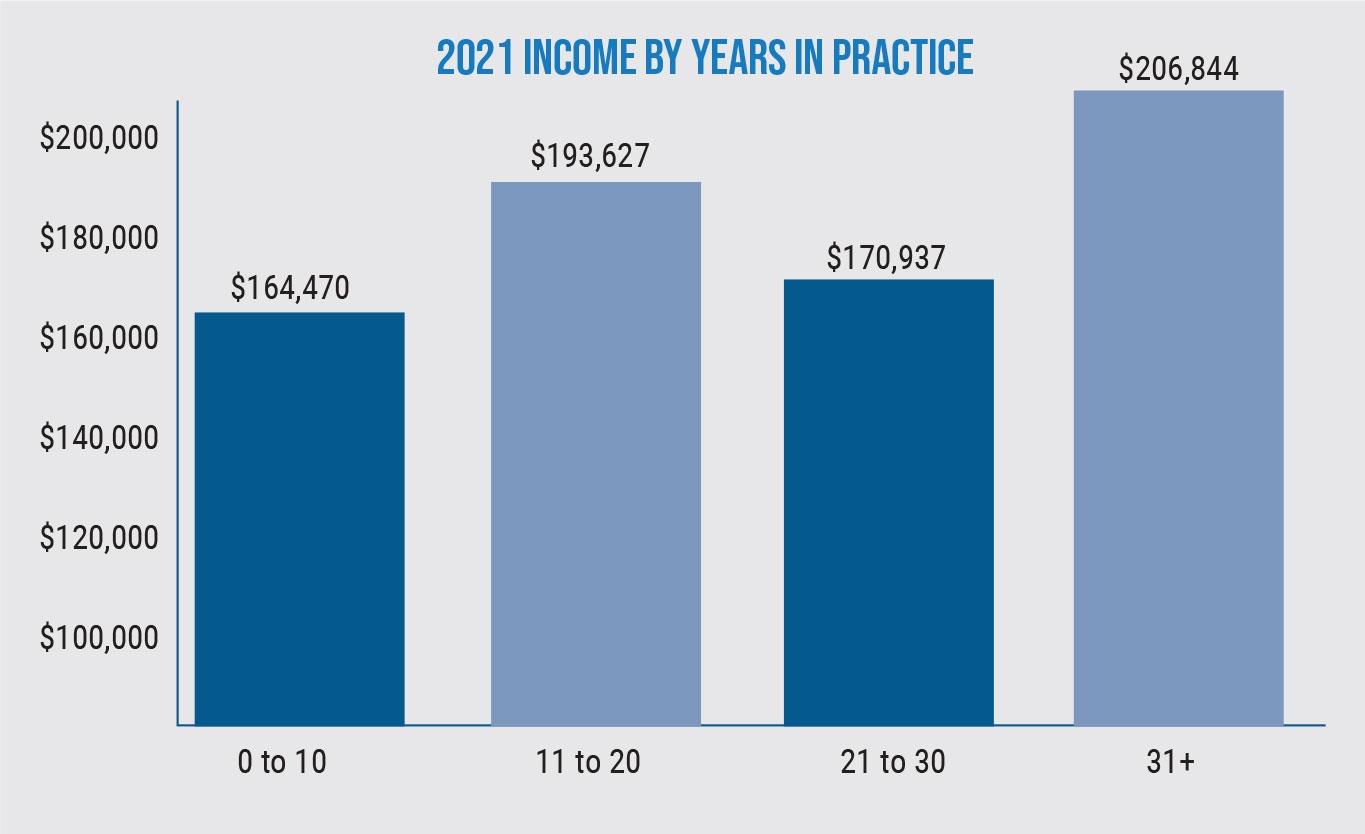 |
| Click to enlarge. |
Employment Experience
Regardless of the number of years spent practicing optometry, this year’s survey cohort showed increases in income—some more notable than others—across the board, with the exception of one experience bracket. Luckily, the more seasoned optometrists seemed to make up for this shortcoming.
Survey respondents with up to 10 years of experience made an average of $164,470 this year, up 29% from 2020.
Those with 11 to 20 years of experience earned 18% more than their newer counterparts, at $193,627. This represents another 7% yearly increase for this group.
Financial progress stalled in this next experience bracket (21 to 30 years of experience). These respondents of the 2021 survey earned 12% less than the previous group, at $170,937—a 3% decrease over the last year.
Getting back on track and earning 21% more than their colleagues with 10 fewer years of experience, the more veteran optometrists—those with over 30 years of experience—reported an average of $206,844 in 2021, up 19% from 2020. This is in line with the notion that more experience equates to higher earnings, which wasn’t always the case in past income surveys.
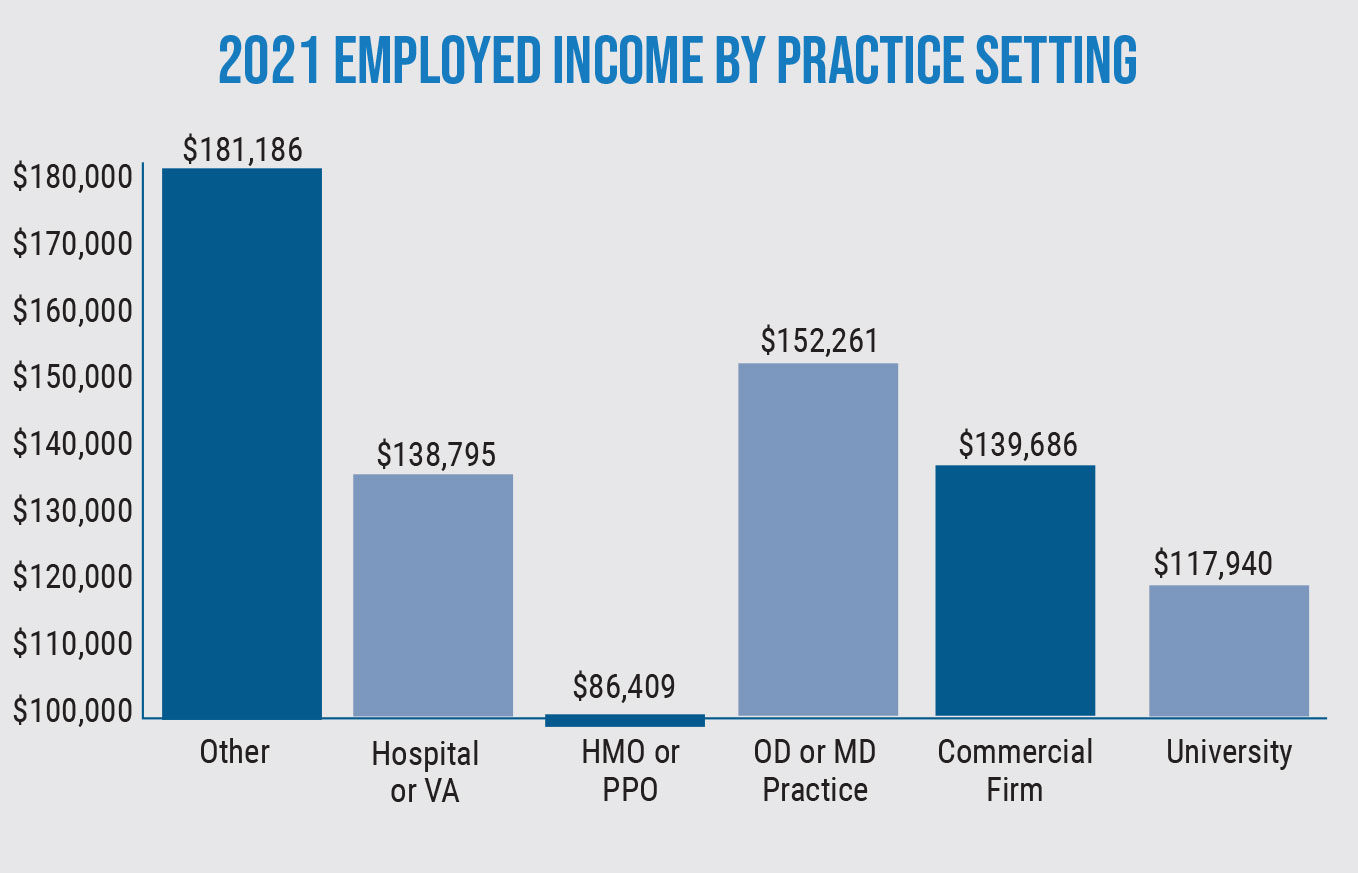 |
| Click to enlarge. |
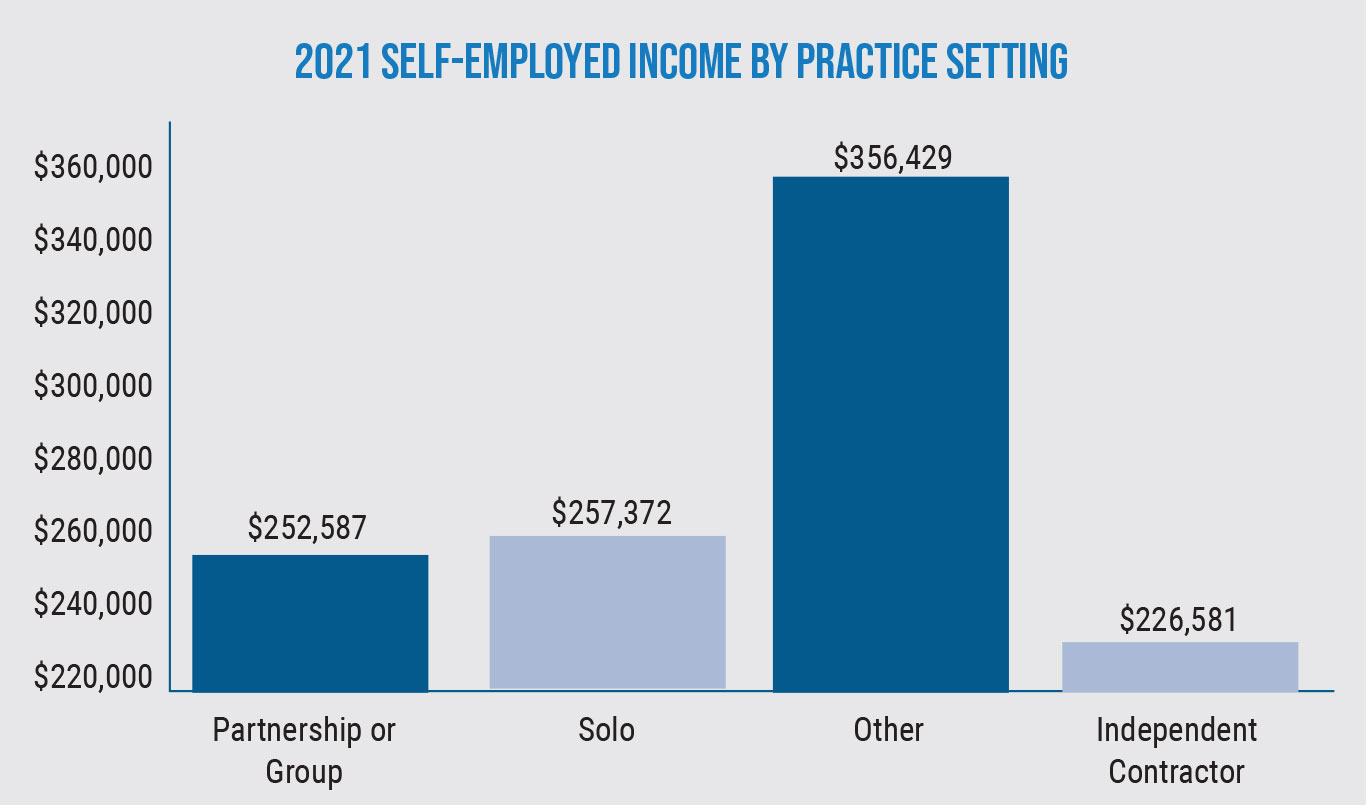 |
| Click to enlarge. |
Worker Wages
Being your own boss continued to benefit survey respondents in 2021. While only 37% are self-employed, these optometrists earned an average of $249,405, or 80% greater than those who are employed and make $138,861 on average. While this gap widened over the course of the year, both groups saw a rise in their take-homes, 22% for self-employed workers and 9% for those who are employed.
Of those who are employed, 32% work for another OD or MD, 23% for a commercial firm, 23% for a hospital or VA, 10% for an HMO or PPO, 7% for a university and 5% for another institution. This breakdown is similar to years past.
Working for an HMO or PPO fell a few rankings from 2020 to sit at the bottom of the totem pole this year, with optometrists in this category reporting an average income of $86,409. These workers continued to suffer financially in 2021, making 37% less than their counterparts last year, who also reported a loss in profitability.
University staff ODs rose one notch in the rankings, from the least profitable in 2020, and employees of a hospital or VA fell several ranks to comprise two of the more lower-paying gigs. University optometrists reported an annual income of $117,940, 2% less than last year. Those who work in a hospital or VA made an average of $138,795 in 2021, down 1% from 2020.
Rising in ranks from 2020 to 2021 were commercial firm workers (earning 16% more than last year at $139,686) and optometrists who work under another OD or MD (25% more at $152,261) to make up two of the more financially attractive ventures.
Stealing the spotlight for the second year in a row were optometrists who chose the “other” employment option. This group reported an average yearly income of $181,186 in 2021, up 25% over the past year.
On the other hand, looking at self-employed workers, 38% are members of a partnership or group, 36% practice on their own, 25% are independent contractors and 1% chose the “other” option. Again, a similar breakdown of self-employed work as preceding years, with each category enjoying a more profitable year than last.
Mirroring what seems to have become a trend, working as an independent contractor was the least profitable self-employment route, with optometrists making an average of $226,581, though still more than each of the employed categories and up 84% from 2020.
Optometrists who are members of a partnership or group fell from the top-ranked category in 2020 (6% more than last year at $252,587), and those who practice on their own held onto their status as runners-up (26% more at $257,372) to comprise two of the more intermediate-paying self-employment gigs this year.
Moving up a few rankings to the top of the chain in 2021 and bringing in a whopping 119% more than last year were self-employed ODs who chose the “other” option and make an average of $356,429.
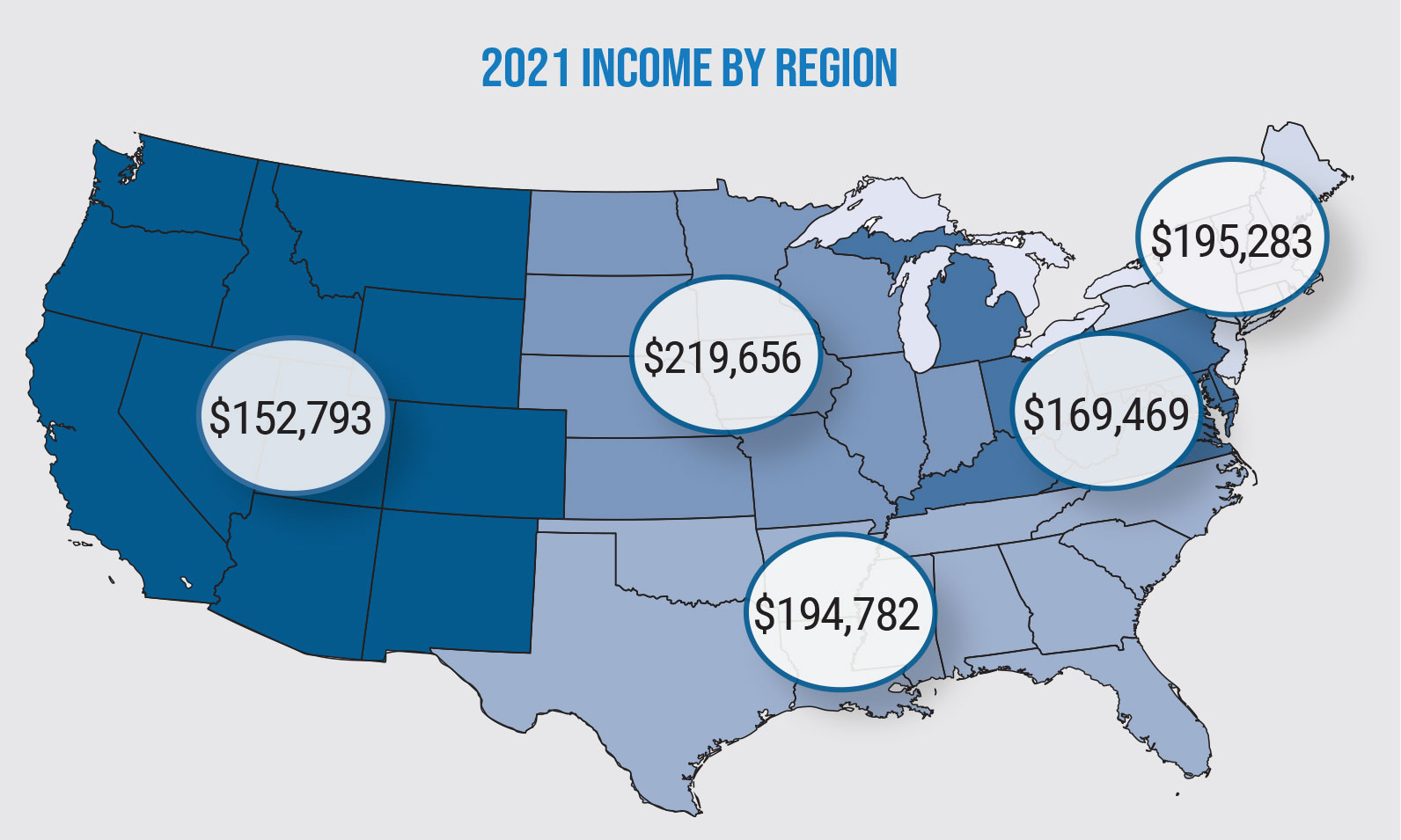 |
| Click to enlarge. |
Regional Riches
Distance isn’t the only thing separating each continental region of the United States; from the least to the most profitable region to practice optometry in the country lies a 44% financial gap. Each region reported an increase in average annual income over the last year, some at more disproportionate rates than others to further widen the regional financial divide.
Optometrists in the West remained the least profitable this year but still managed to make 9% more than 2020, at $152,793. The Mid-Atlantic/Lower Great Lakes region moved down a ranking over the last year to the second smallest take-home category in 201, at $169,469, up 2% from 2020. The South dropped from its place in the lead last year to become one of the more intermediate-paying regions to practice optometry in the country ($194,782) but still managed to bring home 9% more than 2020.
Both the Northeast and the Midwest moved up to become two of the top-paying regions this year. Optometrists up North reported an average income of $195,283, up 31% from 2020, and those further West made $219,656, 32% more than last year, to claim the title as the most profitable place to practice optometry in 2021.
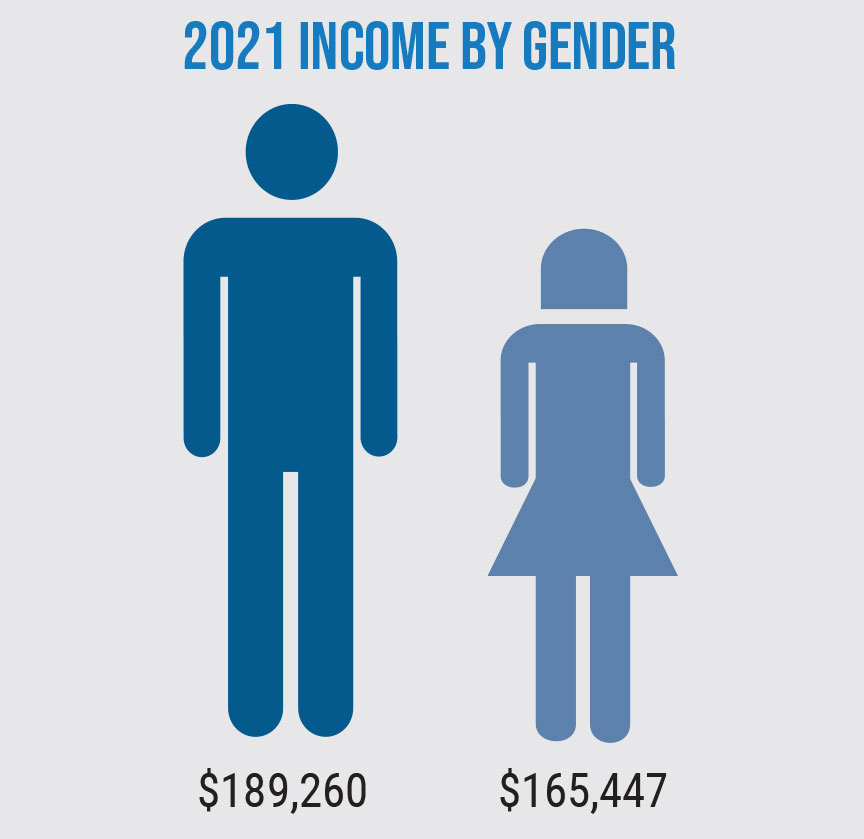 |
| Click to enlarge. |
Earning Equality
Adding to the stream of good news flowing from optometry’s financial picture this year, the gender gap closed by 42% over 2021 to a new low of 14% since the development of this annual income survey. Men (60% of survey respondents) brought home 3% less in 2021 than 2020, for an average of $189,260 on the year and women earned a significant 33% more than last year, at $165,447, to close the divide by a large enough amount to put optometry on the right path when it comes to earning equality across genders.
Also, women at each experience level enjoyed a better year than last, despite experiencing a mid- to late-career plateau.
Men with zero to 10 years of experience in the field reported an average income of $179,721 in 2021, 24% more than female entry-level workers who made $144,536. This gap decreased by 32% over the last year, with men in this experience bracket making 7% more in 2021 than 2020 and women making 34% more, for a closing of the divide.
The group with 11 to 20 years of optometric experience was the only one that saw women out-earn their male counterparts, $205,820 to $176,567. Female optometrists in this bracket closed last year’s male-dominated gap by 45% to zero it out, then widened it by 17% in their favor. Women with this intermediate level of experience earned 38% more than last year and men made 18% less, to flip the disparity.
Men with 21 to 30 years of experience practicing optometry reclaimed the upper edge, out-earning their female counterparts in this bracket by 32%, down 24% from 2020. Male optometrists made $193,179, down 9% from last year, and women made $146,103, up 8%, to turn the tables.
The most veteran male optometrists brought in 20% more than their female counterparts; luckily, however, this represents a sizeable 69% shift in the right direction. Men in this category earned 14% more this year($209,988) and women reported an average of $174,598, up a significant 79% from 2020, to level out the playing field.
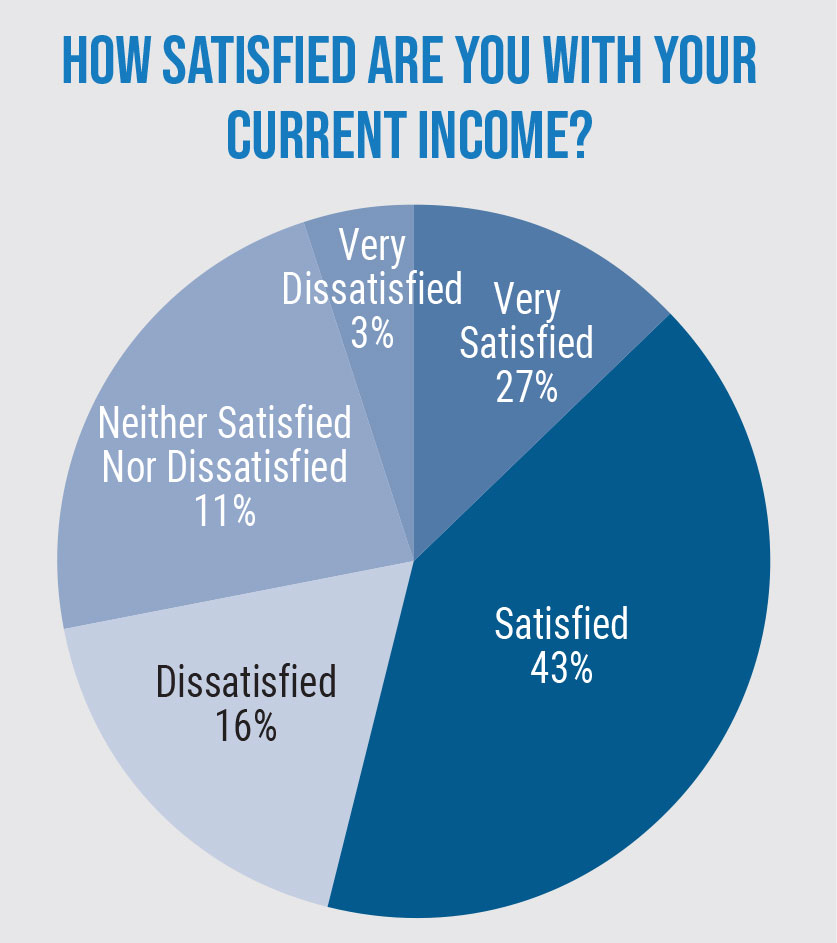 |
| Click to enlarge. |
Practitioner Positivity
Despite the growing pains that come from continuing to adjust to the new COVID-19 era, the majority of optometrists appeared to be focusing on the positives, with 70% reporting feeling satisfied or very satisfied with their income this year (up from 54% in 2020). Many survey respondents cited their annual take-home for their ability to pay off debts while still saving for the future. “I’m able to live the way I want to live and save a little along the way, while paying down practice and student loans,” said one respondent. Others appreciated the work-life balance and schedule flexibility the profession makes possible. A lot of optometrists had the stable nature of the field to thank for consistent promotions, bonuses and raises, especially under the shaky circumstances that have been a constant for almost two years now since the onset of the pandemic.
Those who didn’t fare as well financially named COVID-19 as the top culprit. Many noted increased workloads, staffing shortages, inconvenient mandates and reduced hours as the main work-related downsides of the virus. “The impact of COVID-19 on income has been correspondingly reduced,” a respondent summarized.
Still, many are just happy to have kept their job and remained in good health during such a trying time. “In light of all the challenges with COVID mandates and hiring, I am happy to have a solid income,” said one optometrist.
Looking to the future, 68% of survey respondents expect their income to increase in the coming year (in line with last year’s findings). Many seemed to see the light at the end of the tunnel, sharing a similar mindset: things can only go up from here and continue to improve as the world gets an even better handle on COVID-19.
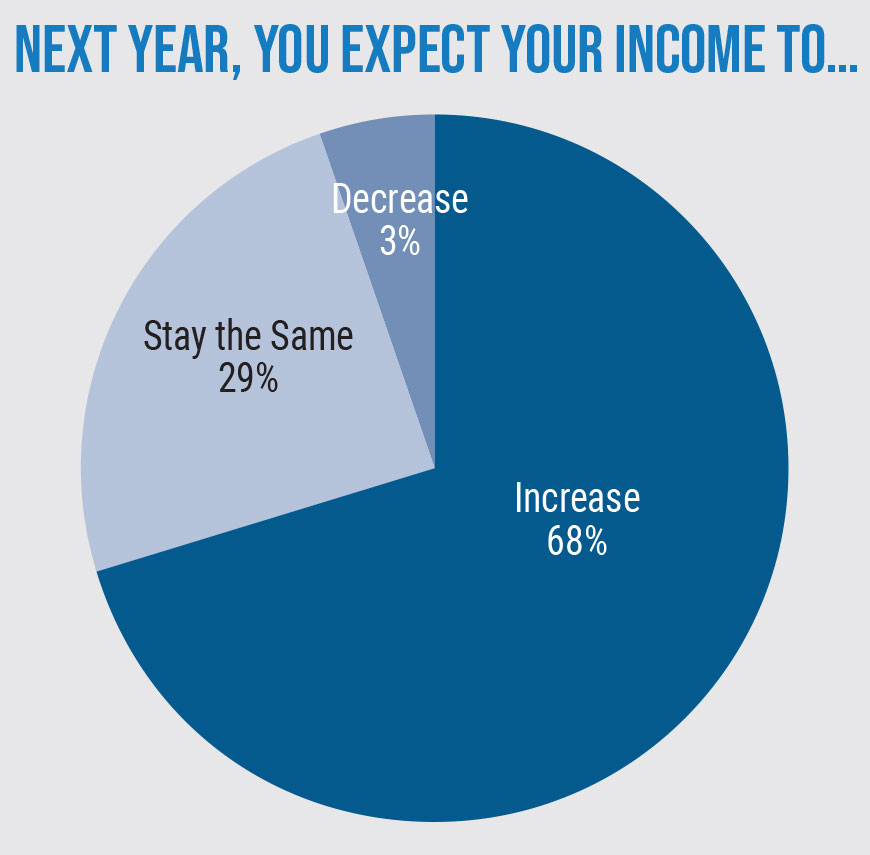 |
| Click to enlarge. |
Forward Focused
As is to be expected, some optometrists fared better financially than others this year, taking into account experience, employment, location and gender. Many, however, seemed to reap the benefits in one way or another of a financially rewarding year for optometry as a whole.
With the majority of survey respondents indicating that their goal remains to continue making more money in the years to come, they’ve outlined ideas to increase their profitability. Potential plans include expanding offices, staffing and hours to increase patient volume, adding technology and specialty services such as myopia management, dry eye and specialty contact lenses to appeal to different patient demographics and increasing marketing and telemedicine efforts to reach a larger population of people.
Optometry certainly felt the effects of COVID-19 last year but seems to have spent 2021 settling in nicely to this new way of life, adopting new strategies and adapting as necessary along the way for a more profitable year for the profession.

